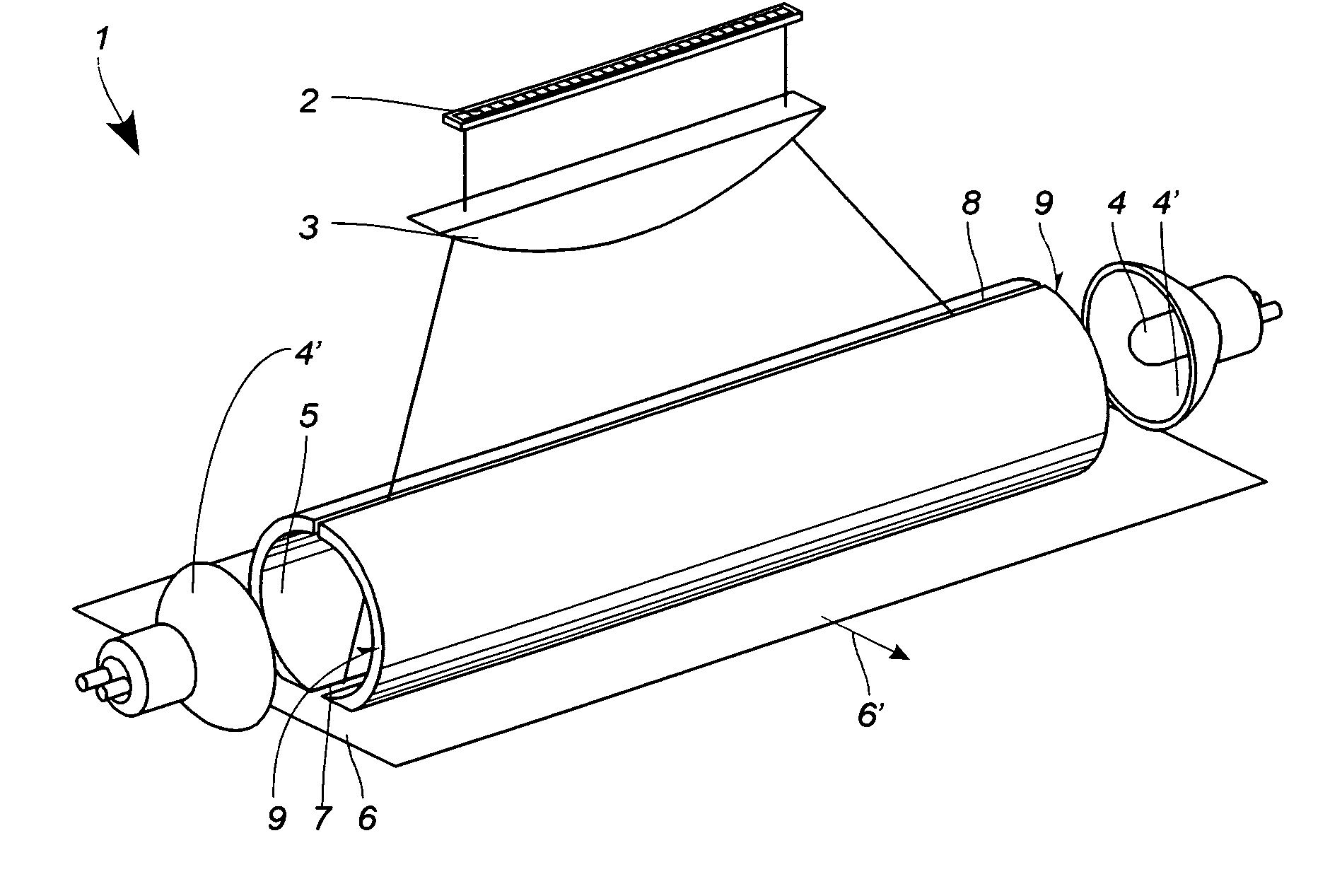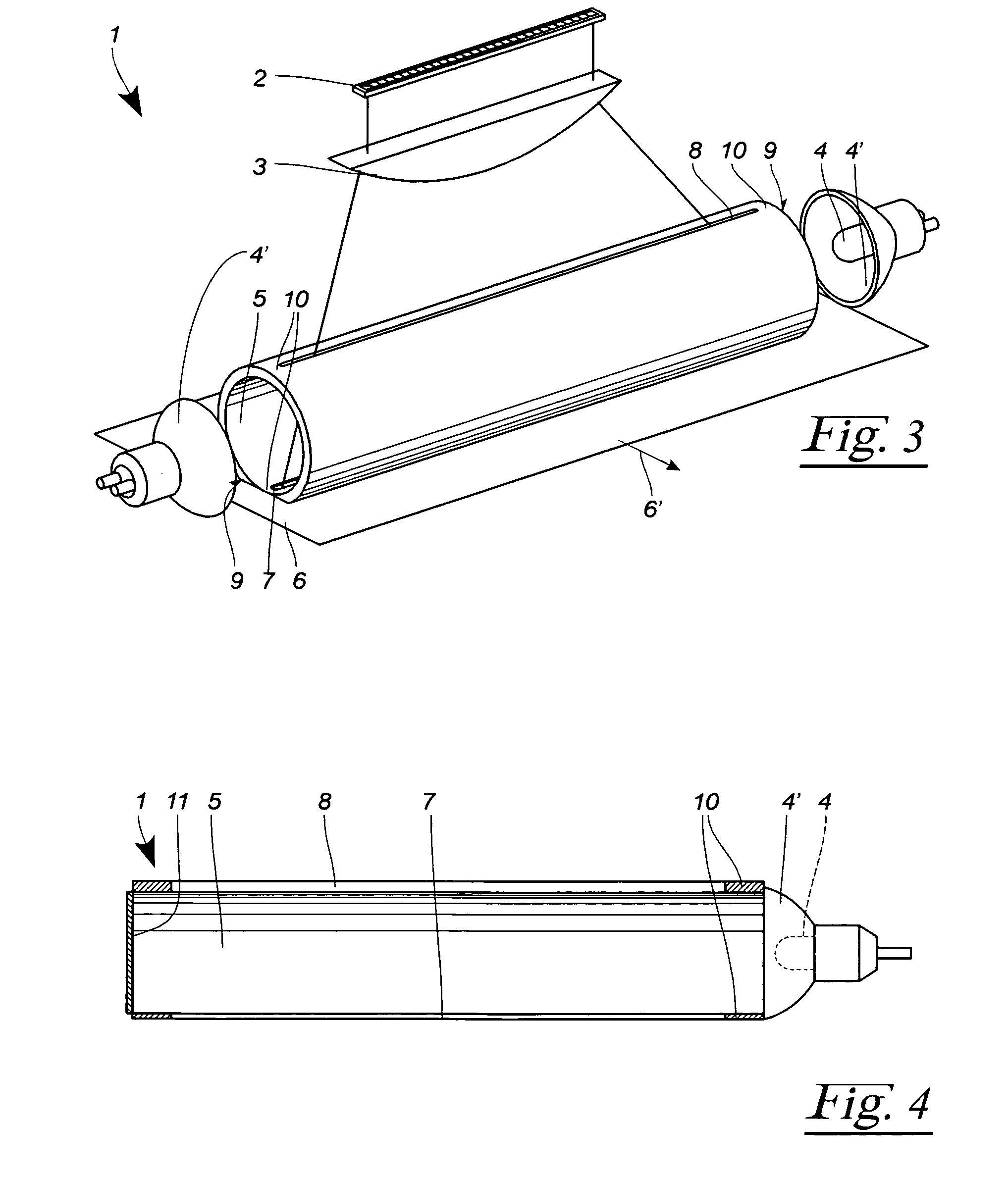Apparatus for linear illumination of a moving product web
a technology of linear illumination and product web, which is applied in the direction of optical radiation measurement, photometry, electromagnetic radiation sensing, etc., can solve the problems of insufficient scanning of a multiplicity of product webs that require diffuse light, and achieve the effect of increasing reflectivity, reducing luminance with the number of reflections, and high reflectivity
- Summary
- Abstract
- Description
- Claims
- Application Information
AI Technical Summary
Benefits of technology
Problems solved by technology
Method used
Image
Examples
Embodiment Construction
[0029]FIG. 1 shows a three-dimensional, diagrammatic exploded illustration of an illumination apparatus 1 which is assigned a line camera 2. The line camera 2 has an objective 3 in the form of a cylindrical lens which focuses the recorded image onto the line camera 2.
[0030]The illumination apparatus 1 has two light sources 4 which are provided at both end faces 9 of a tubular reflector 5. Provided around the two light sources 4 are reflectors 4′ which close the two end faces of the reflector 5.
[0031]On its side facing a product web 6 moving in the direction 6′, the tubular reflector 5 has a light exit slit 7 which completely penetrates the reflector 5. In the region of the light exit slit 7, the reflector 5 is flattened on the product web side in order to be able to guide the product web 6 more closely up to the reflector 5. Provided opposite the light exit slit 7 is an observation slit 8 which likewise completely penetrates the reflector 5. The two slits 7, 8 therefore divide the r...
PUM
 Login to View More
Login to View More Abstract
Description
Claims
Application Information
 Login to View More
Login to View More - R&D
- Intellectual Property
- Life Sciences
- Materials
- Tech Scout
- Unparalleled Data Quality
- Higher Quality Content
- 60% Fewer Hallucinations
Browse by: Latest US Patents, China's latest patents, Technical Efficacy Thesaurus, Application Domain, Technology Topic, Popular Technical Reports.
© 2025 PatSnap. All rights reserved.Legal|Privacy policy|Modern Slavery Act Transparency Statement|Sitemap|About US| Contact US: help@patsnap.com



